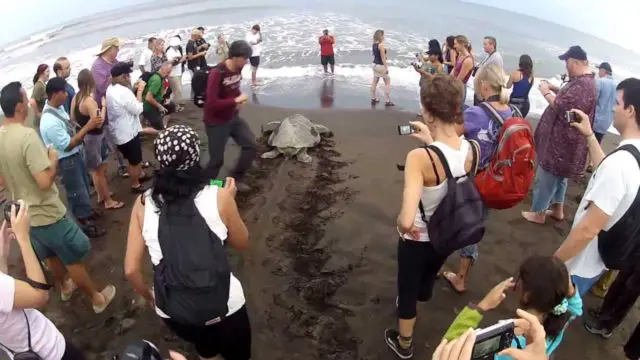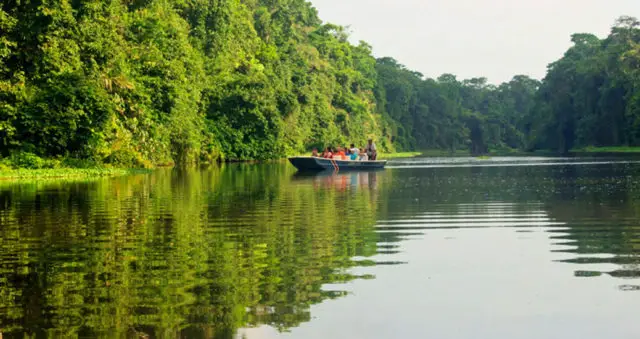Costa Rica is one of the best destinations in the world to enjoy nature. This small country is internationally known for being the first spawning place in the northern hemisphere for the green turtle species and, specifically, we invite you to visit the Tortuguero National Park where these intriguing marine creatures nest.
Tortuguero is located in the north of the Caribbean Coast of Costa Rica. This paradise is far from the bustling resorts; it rather dances to the serene sound of nature. Its beaches are protected areas for turtle nesting. It is also famous to stand by its channels, for the spawning of the turtles whose water coincides between July and October.

Birth occurs throughout the year, depending on the species, since they make their laying; green turtle, hawksbill, loggerhead, and leatherback turtles also abound. It is a unique experience to watch them (always accompanied by a certified guide) spawning at night and laying up to 120 eggs per specimen.
But do not think that this is the only species you can watch. Here you will also find a lot of monkeys, sloths, frogs, iguanas, snakes, fish, crocodiles, and some other species that are difficult to watch such as manatees and pumas.
In essence, Tortuguero is one of the most virgin areas of Costa Rica and difficult to access. It is considered one of the regions with the greatest biodiversity and the richest flora and fauna in Costa Rica. No doubt it is a magical place, full of beautiful navigable canals that cross the lush jungle and, if that were not enough, with shores bathed by the Caribbean Sea.
Except for few streets of the little town of Tortuguero, with colorful shops that invite you to take relaxing strolls, have a drink to cool off, and contract the guided tours of the area in your days of stay here, you will rather spend your time in contact with nature and the sea.
Here there are no roads; only water channels that cross the park where you can navigate in the dense rainforest, full of turtles, alligators, and a great variety of birds. Boats will become your means, both for excursions to watch the wildlife of the Park and to reach the lodgings with excellent facilities, but in communion with nature. A large waterway runs parallel to the Caribbean in one of the main channels of the Tortuguero National Park.

Regarding its climate, it is humid with a lot of rainfall since there is no dry season. In fact, its northern part gets to receive about 6,000 mm of rain a year.
How to get to Tortuguero
This part is not very complicated, actually. You will be surprised to know that it can only be accessed by boat since there are no roads.
But the majority of lodges and hostels inside the National Park will offer you the service of picking you up in San José at the doors of the hotel; from San José to Pavona, which is a river port, and from there on a boat to the lodging of your choice.
Tortuguero townspeople tell us that they prefer the way of life they lead. They had been proposed by authorities to pave a road through the jungle to connect them with San José and they all refused.
As we told you before, Tortuguero is a small and picturesque town with about 100 inhabitants with kind and sincere smile from their faces. Also, colorful houses and a dirt road that runs through some bars and restaurants (do not expect many amenities).
To finish, you should know that it is bathed, on one side, by a channel full of crocodiles and, on the other side, by the Caribbean Sea with occasional sharks attracted by turtles.

